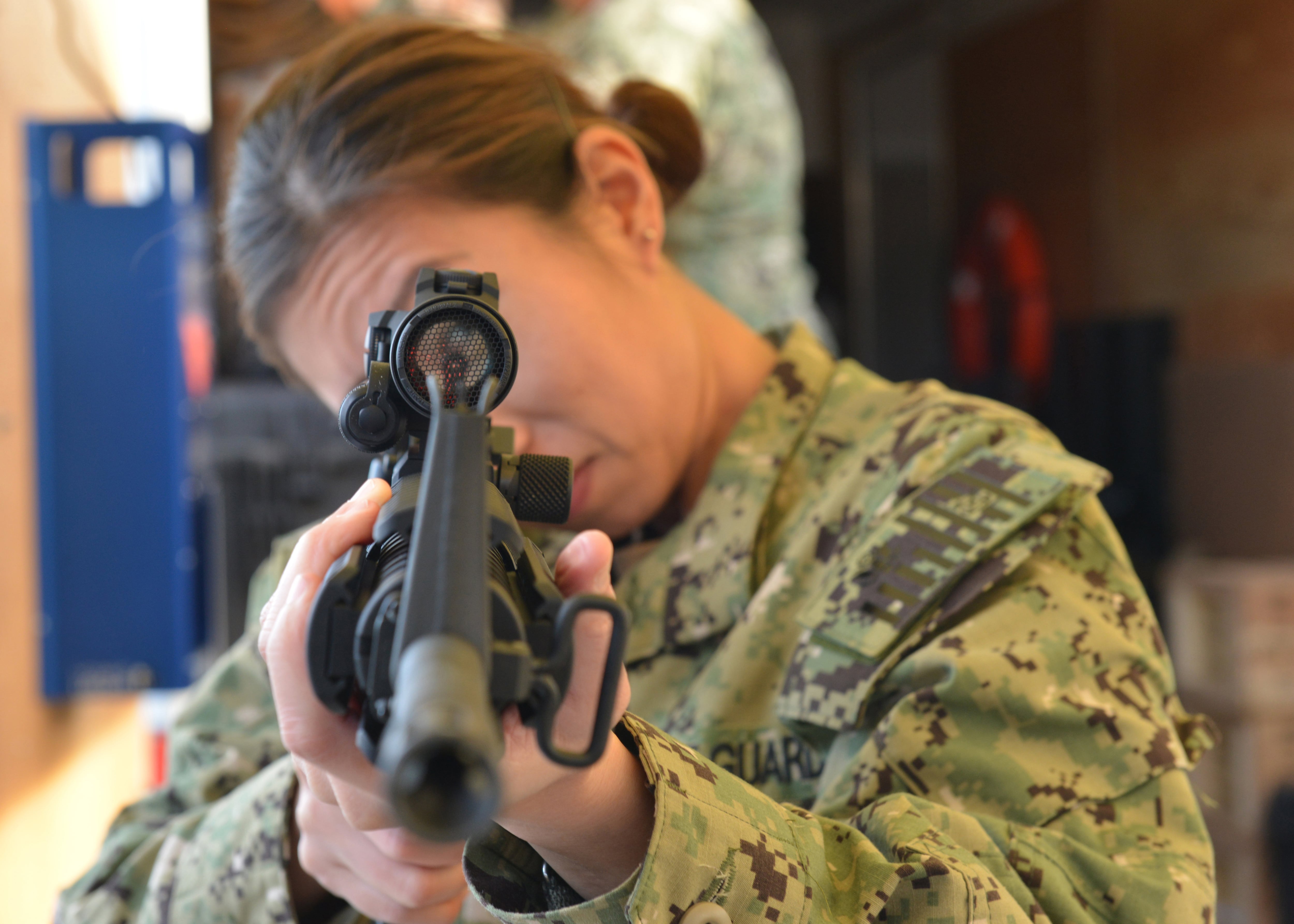From home port inspections to transiting the Taiwan Strait, down to Antarctica and through riverine waterways, the Coast Guard has arguably the most diverse mission set of the armed services.
But despite these responsibilities, the Coast Guard remains a red-headed stepchild of sorts, a military branch that falls under the Department of Homeland Security.
That designation resulted in a lack of payment for Coasties during the 35-day government shutdown of December 2018 and January 2019.
But in a chat during the 2019 Sea-Air-Space conference, Coast Guard Commandant Adm. Karl Schultz said his service is back on track, even as it grapples with the same readiness challenges faced by other services. He also opined on why the Arctic matters more than ever, as well as the difference between the current heavy icebreaker and the coming polar security cutter.
The Coast Guard was hit hard during the government shutdown. What is the service doing to recover?
The shutdown was a shutdown. Obviously going 35 days without pay was tough on our members. Not having appropriations challenged us from a readiness standpoint. I think we have recovered.
Some of the things like boat maintenance periods, dry dock availabilities, we lost some calendar days on that. That’s tough. But going forward, the Coast Guard’s ready to do the nation’s business.
RELATED

What’s the main message you try to convey to lawmakers on Capitol Hill regarding the last shutdown’s impact on the Coast Guard?
I’ve been on the same message since I did my Hill visits before my confirmation hearing in April 2018. The Coast Guard’s challenge is readiness. In a budgeting environment we’ve been flatlined for the good part of eight-plus years. The president rolled out a conversation about national security. It’s fantastic and good for [the Department of Defense], they got a 12 percent [funding] bump in 2018.
Being in DHS, we weren’t part of that conversation. We are a capital-intensive organization like the other armed forces, and we’ve got some bills. We’ve got some maintenance we’ve been kicking the can on, so since before I even assumed the duties of commandant I’ve been having this conversation about the readiness of the Coast Guard and testified recently about being at a readiness tipping point. We just need to enhance the understanding, the fact that it’s a readiness conversation. We need to take ownership of it, and I need to convince folks that this is important for the nation.
Your predecessor hammered the need for icebreaker capacity. Where is the Coast Guard at regarding its next icebreaker?
Two weeks ago today, we award the contract to [VT Halter Marine] down in Mississippi to build the first polar security cutter. We used to talk about heavy icebreakers, now we talk about a polar security cutter. We just rolled out in April what we call the Arctic Strategic Outlook. It’s a refresh on what was our Arctic strategic plan in 2013.
We talk about the Arctic through a different lens now. We talk about the Arctic as a competitive space. We’ve seen China, we see Russia investing extensively. China built icebreakers in the time since we updated our strategy. China’s been operating off the Alaskan Arctic for a good part of the last six years on an annual basis. We’re championing increased capabilities in the Arctic, we’re championing better communications, better domain awareness, we’re talking about innovation, we’re talking about resiliency, we’re talking about rule-based order. I want to see the Arctic remain a peaceful domain. China’s a self-declared Arctic state. They’re not one of the eight Arctic nations, so for me, for the service, its presence equals influence.
Right now, with one 43-year-old heavy icebreaker, Polar Star, that ship is basically a one-trick pony. It goes down to [McMurdo Station, the U.S. scientific outpost in Antarctica] every year and does the breakout, so the National Science Foundation can maintain their operations down there. The first polar security cutter, which probably hits the waterfront late 2023, 2024, is going to be almost a one for one. It’s when we get to the second or third polar security cutter that we start to have some capacity. And again, presence equals influence. I’d like to see us in the Arctic, I’m not saying a fully annual basis, but on a lot more persistent presence up there. That’s where we need to be as a nation.
What’s the difference between today’s heavy icebreaker and the future polar security cutter?
It’s a designation change, it’s the lexicon of adding “security” to the title. We thought it was more artful to capture the reflecting reality in how we talk about that ship. I think that narrative helped raise the bar in understanding.
Click here for more stories, videos and interviews from Sea-Air-Space!
Jeff Martin is the Associate Editor for Multimedia and the host & producer of Defense News Weekly, airing online and on American Forces Network worldwide. In his role as Associate Editor, he reports worldwide on the military and defense industry and leads a market-leading multimedia team.
Geoff is the managing editor of Military Times, but he still loves writing stories. He covered Iraq and Afghanistan extensively and was a reporter at the Chicago Tribune. He welcomes any and all kinds of tips at geoffz@militarytimes.com.





